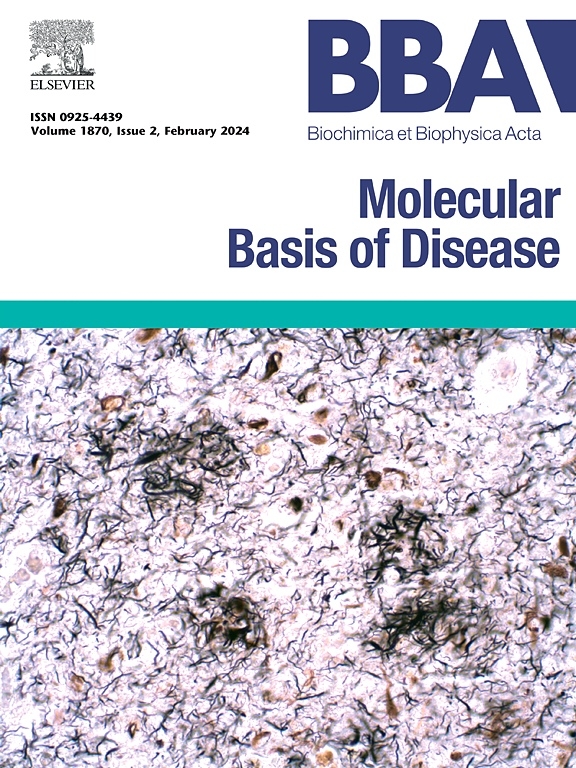GBP1通过诱导库普弗细胞焦亡促进肝移植后急性排斥反应。
IF 4.2
2区 生物学
Q2 BIOCHEMISTRY & MOLECULAR BIOLOGY
Biochimica et biophysica acta. Molecular basis of disease
Pub Date : 2024-12-26
DOI:10.1016/j.bbadis.2024.167644
引用次数: 0
摘要
肝移植是目前公认的治疗严重肝脏疾病最有效的方法。尽管肝移植后的存活率有所提高,但移植肝的排斥反应仍然是患者发病和移植失败的重要原因。我们的团队之前发现了高GBP1表达与肝移植后急性排斥反应之间的密切联系。对移植后出现急性排斥反应或成功实现免疫耐受的患者进行肝活检。我们通过免疫组化证实GBP1在移植后急性排斥反应组中高表达。本研究旨在证实GBP1通过诱导大鼠移植肝巨噬细胞(KCs)焦亡,促进肝移植后的急性排斥反应。我们在KCs中敲除GBP1,并检测大鼠和KCs原位肝移植后移植肝的焦亡程度和急性排斥反应的严重程度。这些数据为肝移植排斥反应的研究和寻找新的靶点提供了新的途径。本文章由计算机程序翻译,如有差异,请以英文原文为准。
GBP1 promotes acute rejection after liver transplantation by inducing Kupffer cells pyroptosis
Liver transplantation is currently recognized as the most effective treatment for severe liver diseases. Although survival rates after liver transplantation have improved, rejection of the transplanted liver remains a significant cause of morbidity and transplant failure in patients. Our team previously discovered a close association between high GBP1 expression and acute rejection reactions following liver transplantation. Liver biopsies were conducted on patients who experienced acute rejection or successfully achieved immune tolerance post-transplantation. We confirmed that GBP1 was highly expressed in the acute rejection group after transplantation by Immunohistochemistry. This study aims to confirm that GBP1 promotes acute rejection reactions following liver transplantation through inducing pyroptosis in rat transplanted hepatic macrophages (KCs). We knocked down GBP1 in KCs and examined the extent of pyroptosis and the severity of acute rejection in the transplanted liver post-orthotopic liver transplantation in rats and KCs. These data provide new approaches for the study of liver transplant rejection reactions and identify new targets.
求助全文
通过发布文献求助,成功后即可免费获取论文全文。
去求助
来源期刊
CiteScore
12.30
自引率
0.00%
发文量
218
审稿时长
32 days
期刊介绍:
BBA Molecular Basis of Disease addresses the biochemistry and molecular genetics of disease processes and models of human disease. This journal covers aspects of aging, cancer, metabolic-, neurological-, and immunological-based disease. Manuscripts focused on using animal models to elucidate biochemical and mechanistic insight in each of these conditions, are particularly encouraged. Manuscripts should emphasize the underlying mechanisms of disease pathways and provide novel contributions to the understanding and/or treatment of these disorders. Highly descriptive and method development submissions may be declined without full review. The submission of uninvited reviews to BBA - Molecular Basis of Disease is strongly discouraged, and any such uninvited review should be accompanied by a coverletter outlining the compelling reasons why the review should be considered.

 求助内容:
求助内容: 应助结果提醒方式:
应助结果提醒方式:


